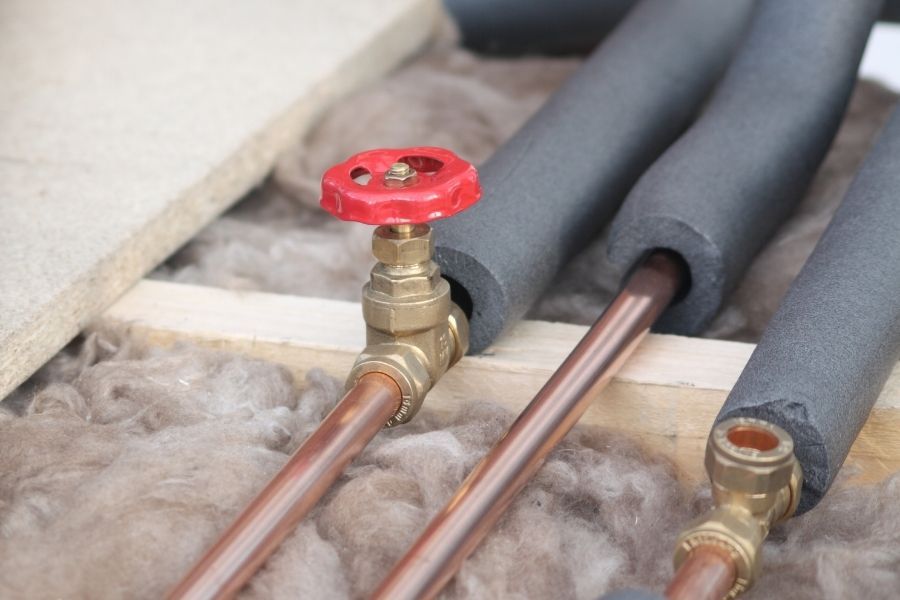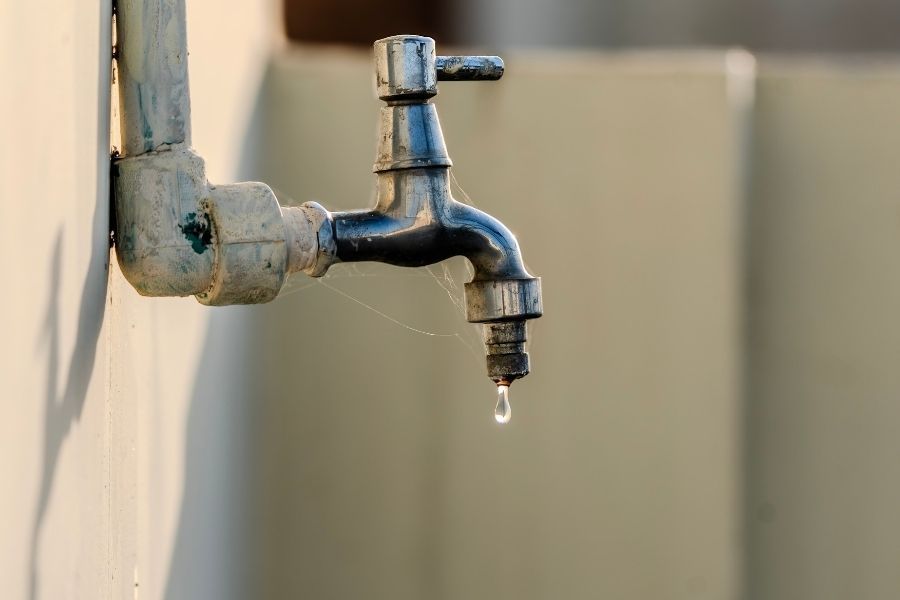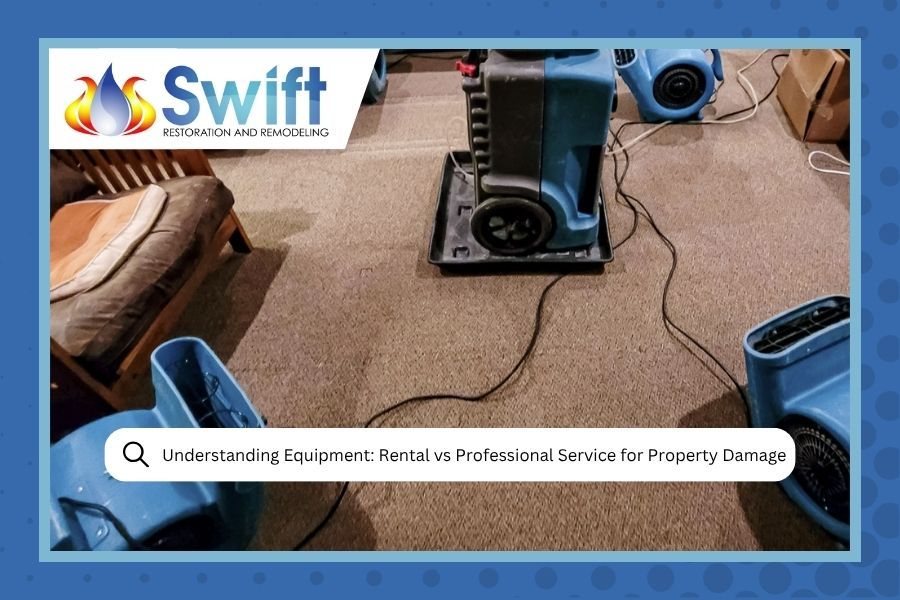
Author: Darin Jenks
Jump to Section:
If you've ever experienced a burst pipe in the dead of winter, you know it's not just an inconvenience, it's a full-blown crisis. One minute you're enjoying a quiet evening at home, and the next, you're frantically calling for water damage restoration ogden ut help while water floods your basement. Here in Northern Utah, our frigid winters make frozen pipes a genuine threat that every homeowner needs to take seriously.
The good news? Most burst pipes are totally preventable with some simple winterization steps and a bit of vigilance. At Swift Restoration and Remodeling , we've seen just about every pipe disaster imaginable over our years serving Weber County, and we're here to help you avoid becoming another winter casualty.
Why Ogden Winters Are Especially Tough on Pipes
Let's be honest, Ogden's winter weather can be brutal. When temperatures plummet below freezing for days at a time, the water inside your pipes can freeze solid. And here's the kicker: water expands when it freezes. This creates immense pressure inside your pipes, sometimes up to 2,000 pounds per square inch, which can cause even strong copper or PVC pipes to crack or burst.
The real danger often comes during the thaw. You might not even know you have a problem until the ice melts and water starts gushing through the cracks. By then, you could have thousands of gallons flooding into your walls, ceilings, or floors. According to the American Red Cross , burst pipes are one of the most common and costly winter home emergencies.
| Temperature Range | Risk Level | Action Required |
|---|---|---|
| Above 32°F | Safe | Normal conditions, no special precautions needed |
| 20°F to 32°F | Caution | Monitor vulnerable pipes, insulate exposed areas |
| Below 20°F | High Risk | Let faucets drip, open cabinets, maintain heat |
| Below 0°F | Critical | Maximum protection measures, check pipes hourly |
Which Pipes Are Most at Risk?
Not all pipes are created equal when it comes to freeze risk. Some locations are particularly vulnerable:
Exterior Walls
Pipes running through exterior walls get the least insulation from your home's heat. If you have a bathroom or kitchen on an outside wall, those pipes are sitting ducks when temperatures drop.
Unheated Spaces
Garages, attics, crawl spaces, and basements are prime targets because they typically aren't heated. Any water lines running through these areas need extra protection, especially if you have water issues in your crawl space that you haven't addressed yet.
Outdoor Fixtures
Hose bibs, outdoor faucets, swimming pool lines, and sprinkler systems are directly exposed to the elements. These should be your first priority when winterizing.
Already Dealing with a Burst Pipe?
Don't wait for water damage to get worse. Our 24/7 emergency response team is ready to help Ogden homeowners minimize damage and start the restoration process immediately.
Fill Out This Form for a Free EstimateEssential Winterization Steps for Pipe Protection
Protecting your pipes doesn't require a plumbing degree. Here are the most effective prevention measures you can take:

Proper pipe insulation is one of the most cost-effective ways to prevent freezing in unheated spaces like basements and crawl spaces.
Insulate Vulnerable Pipes
Pipe insulation is cheap insurance. You can pick up foam pipe sleeves at any hardware store for just a few dollars. Focus on pipes in unheated areas first, then tackle those on exterior walls. Even newspaper wrapped around pipes provides some protection if you're in a pinch (though proper insulation is way better).
Seal Cracks and Openings
Check where pipes enter your home from outside. Any gaps or cracks around these entry points let cold air directly onto your plumbing. Use caulk or spray foam to seal them up. This also helps with energy efficiency, so it's a win-win.
Disconnect and Drain Outdoor Hoses
This is probably the easiest and most overlooked prevention step. Before the first hard freeze, disconnect all garden hoses and drain them. If possible, use an indoor shut-off valve to close off outdoor faucets, then open the outdoor faucet to let any remaining water drain out.
Keep Garage Doors Closed
If you have water supply lines in your garage (which many Ogden homes do), keep the garage door closed as much as possible during cold snaps. Even a few degrees of extra warmth makes a difference.
Your Winter Pipe Protection Checklist
- Insulate all exposed pipes in unheated areas like crawl spaces, attics, and garages
- Seal air leaks where pipes penetrate walls, particularly on exterior walls
- Disconnect outdoor hoses and drain all outdoor faucets before first freeze
- Know where your main water shut-off valve is located in case of emergency
- Keep garage doors closed when temperatures drop below freezing
- Open cabinet doors under sinks during extreme cold to let warm air circulate
- Let faucets drip slightly when temperatures dip into single digits
- Maintain indoor temperature at least 55°F, even when away from home
- Check attic insulation to prevent heat loss that could affect pipes
- Consider installing a smart water leak detector for early warning
What to Do During Extreme Cold Snaps
When the weather forecast shows temperatures dropping into the single digits or below zero (which happens more than we'd like in Ogden), it's time to take extra precautions:

Letting faucets drip during extreme cold weather keeps water moving through pipes, significantly reducing the risk of freezing.
Let Faucets Drip
Running water, even at a trickle, is much harder to freeze than standing water. On the coldest nights, let faucets connected to vulnerable pipes drip slowly. Yes, this wastes a bit of water, but it's nothing compared to the water you'll lose and the damage from a burst pipe if things go wrong.
Open Cabinet Doors
Kitchen and bathroom sinks often sit against exterior walls. Opening the cabinet doors lets your home's heated air circulate around the pipes. Just make sure to move any cleaning products out of reach if you have kids or pets.
Keep Your Heat On
If you're heading out of town during winter, don't turn off your heat completely. Keep it set to at least 55°F. The small amount you'll spend on heating is nothing compared to the potential for catastrophic water damage.
Need professional help protecting your home? Learn About Our Water Damage Services
Recognizing the Warning Signs
Sometimes, despite your best efforts, pipes still freeze. Catching it early can prevent a burst. Watch for these red flags:
- Reduced water flow: If you turn on a faucet and only get a trickle, especially during cold weather, you likely have ice forming in that line
- Frost on pipes: Visible frost or condensation on exposed pipes is a clear sign they're too cold
- Strange smells: If a drain is blocked by ice, sewer gases might back up into your home, creating unpleasant odors
- No water at all: Complete loss of water to a fixture almost certainly means a frozen pipe somewhere in that line
If you notice any of these signs, take action immediately. The sooner you address a freezing pipe, the better your chances of preventing it from bursting. And if you're dealing with the aftermath of water damage, professional water damage assessment can help determine the full extent of the problem. Understanding common causes of water damage can also help you identify other vulnerabilities in your home.
What to Do If a Pipe Freezes
Found a frozen pipe? Don't panic. Here's your game plan:
- Keep the faucet open: Turn on the faucet connected to the frozen pipe. As the ice melts, water needs somewhere to go, and an open faucet reduces pressure buildup
- Apply gentle heat: Use a hair dryer, heat lamp, or hot towels to warm the pipe. Start at the faucet and work backward toward the coldest section. Never use a blowtorch, propane heater, or other open flame
- Check for leaks: As the pipe thaws, check carefully for cracks or splits. Even small leaks can quickly become big problems
- Call for help: If you can't locate the freeze, if the pipe is inside a wall, or if you're uncomfortable thawing it yourself, call a professional. At Swift Restoration and Remodeling, we're always available for emergency situations
One thing many homeowners don't realize is that sometimes a pipe can freeze and crack without immediately bursting. The real flood happens later when it thaws. This is why professional inspection after a freeze is often a good idea, even if everything seems fine at first.
The Cost of Prevention vs. Repair
Let's talk numbers for a second. Winterizing your plumbing might cost you $50 to $200 in materials like pipe insulation, caulk, and maybe a few hours of your time. Even hiring a professional to winterize runs maybe a few hundred dollars.
Compare that to the average cost of water damage from a burst pipe, which according to the Insurance Information Institute can easily reach $5,000 to $10,000 or more. That's not even accounting for the hassle, stress, and potential displacement from your home during repairs.
We've worked on countless restoration projects where homeowners tell us, "I wish I'd just spent the afternoon winterizing." Learn from their experience. Prevention is always, always cheaper than cleanup and repair.
When to Call in the Professionals
Some situations are definitely DIY-friendly, while others call for professional help:
DIY-Appropriate Tasks
- Insulating accessible pipes
- Disconnecting outdoor hoses
- Sealing small cracks around pipe entry points
- Letting faucets drip during cold weather
- Thawing accessible frozen pipes with a hair dryer
Call a Professional For
- Pipes frozen inside walls, floors, or ceilings
- Any signs of pipe damage or cracks
- Extensive winterization of complex plumbing systems
- Water damage cleanup and restoration after a burst
- Situations where you're not comfortable or confident
And remember, if disaster does strike and you find yourself dealing with water damage, time is critical. The longer water sits, the more damage it causes. Our team has helped countless Ogden homeowners recover from burst pipes, and we understand the urgency these situations require.
Your Ogden Home Deserves Protection
Northern Utah winters are beautiful but unforgiving. Your home's plumbing system needs a little TLC before the cold really sets in. The steps we've outlined here aren't complicated or expensive, but they can save you from a genuine nightmare scenario.
At Swift Restoration and Remodeling, we've seen firsthand what happens when pipes burst, and we've helped hundreds of local families recover. We'd much rather see you take preventive action now than call us in the middle of a winter emergency (though we're always here if you need us, 24/7).
Take a weekend afternoon this fall to winterize your plumbing. Your pipes will thank you, your wallet will thank you, and you'll sleep better knowing your home is protected when those frigid January nights roll around. Stay warm out there, Ogden!








